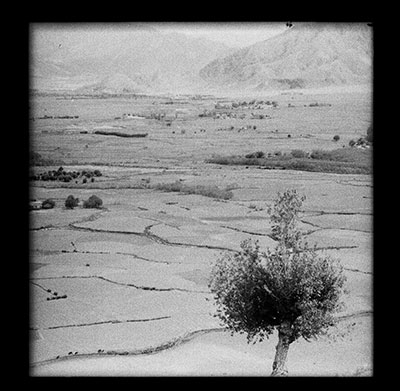
2001.59.15.58.1 (Film negative)


2001.59.15.58.1 (Film negative)

Hugh E. Richardson
Hugh Richardson
1949
Yarlung Valley Region > Rechungphug (view from)
2001.59.15.58.1
55 x 55 mm
Negative film nitrate
Donated August 2001
The executors of the estate of Hugh E. Richardson
Richardson's 1949 tour of the Yarlung and Chyongye valleys
Negative Album 9 No. 58
Manual Catalogues - Notes on negative album (slip cover) - 'Drikhung. Chongye. etc.' in Richardson's hand in white. (Yellow spine label) 'DRIKHUNG. CHONGYE. KOTSHAL. RGYAMA. Ganden 1948'. (Cover) - '9 DRIKHUNG. CHONGYE. YARLUNG. GYAMA. GANDEN' [KC 15/5/2006]
Manual Catalogues - Notes in negative index - Folio 58. 'YARLUNG VALLEY FROM RAS CHUNG' [KC 22/5/2006]
Other Information - History: Richardson discusses this site in High Peaks, Pure Earth' London, Serindia Publications, 1998, p.
319. "The Bka'-brgyud-pa monastery of Ras-chung-phug (1949) clings, at different levels, to the hillsides which separates the Yarlung and 'Phyong-rgyas valleys. It is built above the meditation cave of Ras-chung-pa, a close personal disciple of Mi-la-ras-pa. The cave was a rather shallow recess with images of Mi-la-ras-pa and Raas-chung-pa on the altar and a small mchod-rten in front. ... A many-armed Bde-mchog (Shamvara) resided in the dgon-khang . [KC 22/5/2006]
For Citation use:
The Tibet Album.
"Yarlung valley from Rechungphug monastery"
05 Dec. 2006. The Pitt Rivers Museum.
<http://tibet.prm.ox.ac.uk/photo_2001.59.15.58.1.html>.
For more information about photographic usage or to order prints, please visit the The Pitt Rivers Museum.
© The Pitt Rivers Museum